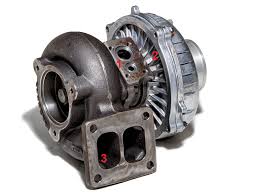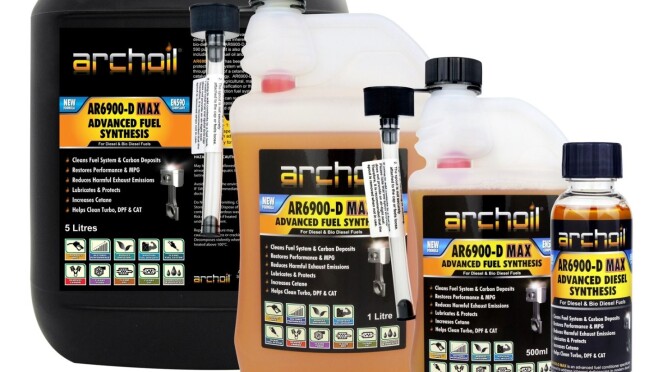UPDATED AUG 2022.
Not a week passes where we are not asked by a consumer or repair garage to recommend a solution for clogged turbo chargers, particularly variable vane equipped units on diesel engines.
While turbochargers offer enhanced performance for both petrol and diesel vehicles, they’re not without problems. One of those is maintenance and cleaning – carbon can build up over time and use, threatening the turbo’s operation and other post-combustion components in the engine.
Understanding the Situation:
Let’s address why turbochargers clog up or accumulate deposits. A turbo is essentially driven by exhaust gases. These gases are the result of the combustion process and contain particulates, hydrocarbons and even oil that have entered the system. What happens is that these particulates build up on the hot side of the turbo. The carbon can also build up on the wastegate, which creates problems for the turbo actuator in controlling the boost. The wastegate can then stick, which means the solenoid that controls the actuator is affected because it’s trying to draw more current than it’s designed for. The ECU picks up this condition and throws a warning light, putting the vehicle in limp mode.
With diesel engines, the most common issue is the accumulation of carbon on the variable vanes mechanism resulting in sticking or complete seizure. This creates either an under-boost or over-boost condition, usually resulting in an engine warning light and tripping the limp home mode, restricting the vehicle to low power and 2.5k to 3k RPM.
Why do turbochargers accumulate deposits in the first place?
1. Accumulated deposits in the fuel system and combustion area will result in a lower quality of combustion resulting in additional hydrocarbons that will deposit in the post-combustion regions such as the turbocharger.
2. Driving styles and type of journeys. Stop-start driving and short trips will take their toll as the engine cannot reach sufficient temperature to optimize combustion quality and help burn off existing carbon deposits. More hydrocarbons are produced while the engine is in its warm-up cycle.
3. Oil – this is the missing link. Many believe that post-combustion carbonaceous deposits are the result of un-combusted fuel only. This is not true. In diesel vehicles especially, the carbon is a mix of fuel AND oil. Oil bypassing the piston rings will end up in the combustion chamber, will not be fully combusted, and will end up being deposited in the post-combustion areas such as the turbo, DPF, EGR, etc. Oil recirculating from the crankcase breather system can also deposit within the intake system.
From the above, you can see that there are several contributory factors.
Turbo Carbon Removal:
If you are unfortunate enough to have a turbo diagnosed with excessive carbon build-up, then several options are available. Firstly, politely decline any suggestion that the turbo must be replaced unless the unit is proven faulty, damaged, or excessively worn. Excessive carbon does not fall into any of these categories.
It is equally important to address the cause and any remedial work or treatments. It’s pointless tackling the carbon on the turbo directly without ensuring the fuel system runs efficiently because the chances are high that the turbo will just accumulate more carbon immediately after cleaning if the fuel system isn’t clean and operating correctly. I repeatedly hear of garages replacing turbos only for the same problem to reoccur shortly after with the newly replaced unit. This may be profitable for the garage but not cost-effective or convenient for the customer.
Therefore, when looking to resolve this issue, you first need to make sure the fuel system is clean and operating correctly. There are a variety of products on the market that will achieve this.
In tank fuel cleaners:
Forget the cheap cleaners, as these rely on the principle of natural cleaning through carbon scavenging. To learn more about that, read our article “EGR cleaning and EGR Cleaners.” These products clean the fuel system and improve the quality of the combustion process, resulting in cleaner exhaust gases. These cleaner exhaust gases, combined with heat, can naturally scavenge and clean the carbon from all post-combustion areas, including the turbo. This is somewhat effective, but you achieve the same results from a high-quality fuel system cleaner.
If a fuel system cleaner doesn’t fully resolve the problem, you could try a dedicated turbo cleaner. Again, many products are available, but most share a common flaw – they are post-post-combustion catalysts that only address post-combustion carbon, leaving the fuel system alone.
The best solution is a chemistry that combines modern high-strength detergents to ensure the fuel system is clean AND fuel-borne catalyst technology to remove and burn off post-combustion carbons.
For this, we recommend the Oilsyn DPF & Turbo Dr as it uses various detergents and fuel-borne catalyst technology that survives the combustion process and is still active post combustion to provide the best chance of removing deposits. If this doesn’t work, no other fuel-based turbo cleaner will make a difference.
This approach works 8/10 times, which is the highest success rate we have seen by far. Also, remember that heat is your friend, and occasionally dropping a gear or two to increase temperatures will assist the cleaning process.
If unsuccessful, then the only option (other than cleaning the turbo in situ or removing it) is to try an aerosol-based cleaner sprayed into the air intake. The good ones contain a blend of chemicals, some of which survive the combustion process and reach the turbo. They are best used when the engine is cold as more product will reach the turbo.
Only turbos severely seized with a combination of solidified fuel and oil-based carbonaceous deposits may not respond to these treatments. If unsuccessful, the only solution is to remove the turbo for manual cleaning.
Remove turbo for cleaning:
As a last resort, the turbo will need to be removed and professionally cleaned using the correct detergents.
Prevention and Maintenance:
Carrying out the below will provide the best possible chance of preventing deposit build-up and potential malfunction of the turbocharger.
1. Keep the fuel system and combustion area running efficiently by using a regular high-quality fuel conditioner such as Oilsyn Diesel Power/Race DNA or Archoil AR6900-D MAX. These will improve combustion quality and reduce the amount of recirculating hydrocarbons, even when the engine is cold!
2. Use the best quality oil possible or at the very least fortify it with an additive such as Archoil AR9200 or AR9400. Not only will this protect the turbo against wear, but it will keep the crankcase clean, maintain engine compression (this reduces oil bypassing the piston rings), and help prevent adhesion within the intake system, turbo, and EGR even if it does bypass the rings or crankcase breather system.
3. If you suspect a reduction of cylinder compression, use a professional engine flush or advanced cleaner such as Oilsyn ReleaseTech Power Flush or Power Cleaner, followed by an oil change. It is often postulated that compression loss results from engine (piston/rings/cylinder) wear. This is not always the case. Most compression loss conditions result from deposit build-up on the piston rings and skirts. The build-up then forces the rings from the bore and thus reduces engine compression. A professional flush will resolve this quickly and effectively. A high-quality oil and additive pack such as AR9200 or AR9400 will prevent any future deposit build-up or compression loss.
4. Occasionally drop down a gear or two to increase the revs and thus increase the temperature. Heat is your best friend when it comes to removing carbon. This is also important when using any fuel additives as it will enhance the efficacy of the cleaning chemistry.
Many oils, costly fully synthetic oils with low SAP or ash content designed for DPF-equipped vehicles, do not have sufficient quality or enough additive strength to keep the turbo well lubricated for the extended oil drain cycles that we now see. Some are supposedly designed to last up to and beyond 20,000 miles. However, from our experience and oil analysis, we find that these oils begin to struggle long before that mileage is reached.
I would recommend researching your engine and vehicle to understand the susceptibility of the turbocharger to failure or deposit accumulation. If there are documented cases of either of these, we advise that you use the appropriate lubricants and additives to ensure your vehicle does not encounter the same problems. Please don’t hesitate to contact us if you need further advice on this matter.
Oilsyn and Archoil products can be purchased from http://www.powerenhancer.co.uk




 categories
categories